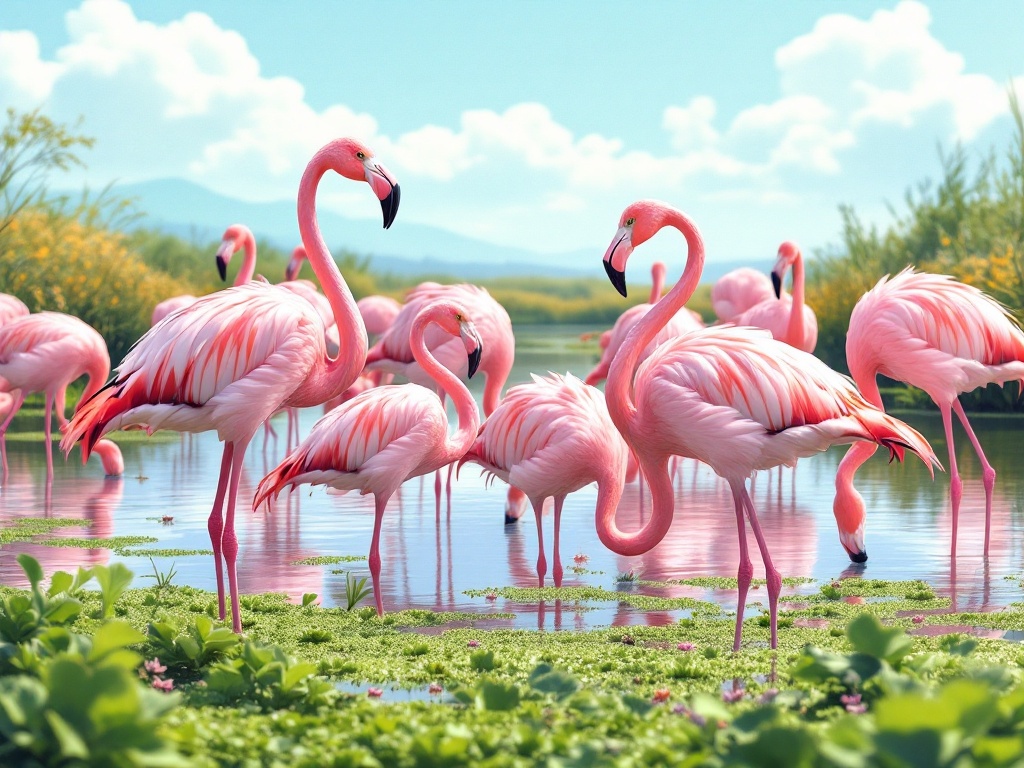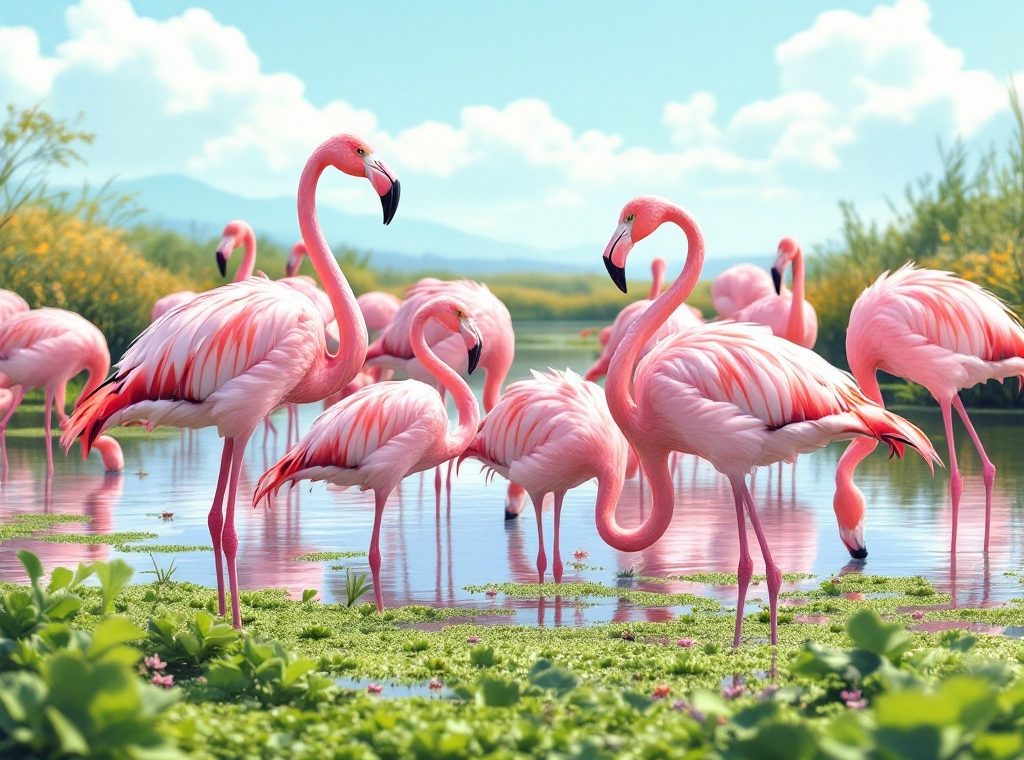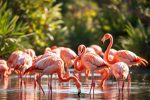Why Do Flamingos Lose Their Pink Color
Ever wonder why flamingos aren’t always vibrantly pink? These iconic birds get their stunning color from carotenoids found in their diet of algae and crustaceans. Discover how food scarcity, pollution, parenting, and even seasonal changes can impact a flamingo’s hue, sometimes fading it to almost white. Explore the fascinating link between diet, environment, and the vibrant colors of these remarkable creatures.
Important information

- Flamingos get their pink color from carotenoid pigments found in algae and crustaceans, which are their primary food sources.
- Reduced carotenoid intake from diet, pollution, or environmental changes can cause flamingos to lose their pink color, sometimes turning almost white.
- Producing crop milk to feed their chicks depletes parent flamingos’ carotenoid reserves, temporarily fading their color.
- Environmental factors like pollution, habitat degradation, and seasonal changes in food availability also affect flamingo coloration.
- Genetics play a role in how efficiently flamingos absorb and utilize carotenoids, leading to color variations among individuals and species.
Why Do Flamingos Lose Their Pink Color?
Flamingos are renowned for their vibrant pink feathers, a color they acquire from carotenoid pigments present in their diet of algae and crustaceans. Without sufficient intake of these foods, their feathers lose their intensity, sometimes becoming almost white. Interestingly, parenting duties also influence a flamingo’s coloration. To feed their chicks, flamingos generate a carotenoid-rich crop milk, which temporarily diminishes the parents’ pink vibrancy. Nutritional deficiencies or metabolic problems can also affect their color. Environmental factors, such as food scarcity or pollution, play a role by limiting carotenoid intake. Even seasonal changes and non-breeding periods can cause slight color variations.
The Role of Diet in Flamingo Pigmentation
Flamingos are renowned for their vibrant pink feathers. This striking coloration comes directly from their diet of algae and crustaceans. These organisms contain pigments called carotenoids, which give the birds their bright hues. Without carotenoid-rich foods, a flamingo’s color fades, sometimes turning white, which indicates a dietary deficiency. This highlights the importance of nutrition in maintaining the birds’ beautiful appearance.
Nutritional Deficiency and Metabolism Issues
A flamingo’s vibrant color directly depends on proper nutrition. Poor diet disrupts their metabolism, hindering carotenoid absorption, the pigments responsible for their pink hue. Specifically, a lack of beta-carotene and canthaxanthin leads to noticeable fading. Other dietary deficiencies can also contribute to this loss of color. A varied diet rich in carotenoid-rich foods, such as shrimp, algae, and krill, is crucial for maintaining their signature pink plumage. Without enough of these pigments, flamingos can fade to white or pale pink. This emphasizes the importance of proper nutrition for these visually striking birds.
The Role of Crop Milk in Parental Color Loss
Parent flamingos produce a nutrient-rich “crop milk” for their chicks, packed with carotenoids—the pigments responsible for their vibrant pink color. Nourishing their young with this milk depletes the parents’ own carotenoid reserves, causing their color to temporarily fade. This sacrifice ensures the chicks receive vital nutrients for healthy growth and development.
Environmental and Habitat Influences on Color Loss
Flamingo coloration is a complex issue influenced by a variety of factors. Pollution and habitat degradation play significant roles, but food availability is crucial. Changes in water conditions impact the algae and crustaceans that form the flamingo’s diet, and seasonal variations further affect these food sources, ultimately impacting the birds’ color. Overcrowding and predators introduce stress, which in turn reduces nutrient intake, hindering the production of pink pigmentation. Genetics also contribute, influencing carotenoid absorption and utilization. Consequently, different flamingo species experience varying degrees of color loss at different times, depending on their specific diets and habitats. Here’s a breakdown of the key factors:
Diet
Algae and crustaceans are the primary food sources for flamingos, providing the carotenoids responsible for their pink color. Changes in water conditions and seasonal variations can significantly impact the availability of these food sources, affecting the intensity of the birds’ coloration.
Environmental Factors
Pollution and habitat degradation can negatively impact food sources and introduce toxins, affecting flamingo health and color. Overcrowding and the presence of predators can cause stress, reducing nutrient intake and hindering pigment production.
Genetics
Genetic factors influence how efficiently flamingos absorb and utilize carotenoids from their diet, contributing to variations in color intensity between individuals and species.
Species and Habitat
Different flamingo species inhabit varied environments, leading to differences in diet and exposure to environmental factors. This results in varying degrees of color loss at different times across species.
Seasonal Changes and Non-Breeding Color Variations
Flamingos are known for their vibrant pink plumage, but this striking color can fade outside of breeding season. This fading is a direct result of dietary shifts linked to environmental changes. The pink coloration comes from carotenoid pigments found in the flamingos’ food. When food sources change during the non-breeding season, carotenoid intake decreases, leading to a less intense pink hue.
















